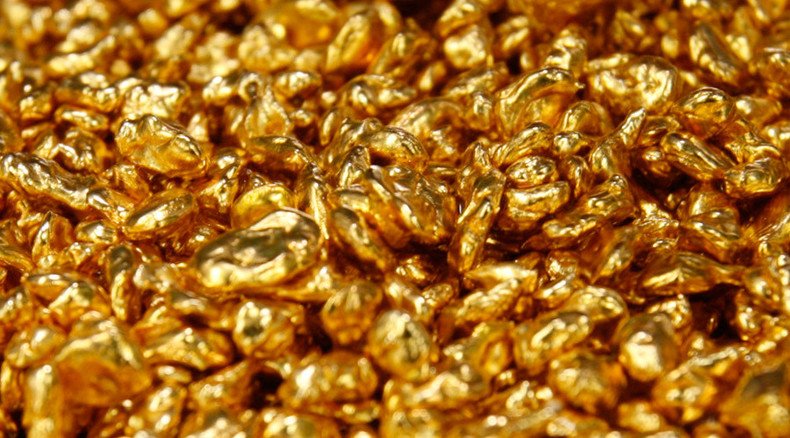Scientists turn gold into foam as light as air & malleable by hand

Guess the riddle: what is almost as light as air and as precious as gold? Well, actually, it is gold, Swiss scientists say. Researchers at ETH Zurich claim to have created a new type of the metal, the lightest ever produced.
The new material has taken the form of a foam, which is a thousand times lighter than solid gold. Yet, according to the researchers, it's next to impossible to tell the difference with the naked eye, because the so-called aerogel also boasts a metallic sheen. The gold foam is soft and malleable by hand. It consists of 98 parts air and only two parts of solid material. Of this solid material, over four-fifths are gold, and less than one-fifth is milk protein fibrils. This corresponds to around 20 carat gold, according to the researchers at ETH Zurich (Swiss Federal Institute of Technology).
A three-dimensional mesh of gold consists mostly of pores. "It is lighter than water and almost as light as air," Raffaele Mezzenga, Professor of Food and Soft Materials, who led the research, said.
The scientists managed to create this porous material by heating milk proteins to produce nanometer-fine protein fibres, so-called amyloid fibrils, which they later placed in a solution of gold salt. The protein fibres interlaced forming a basic structure, along which the gold simultaneously crystallised into tiny particles. This resulted in a gel-like gold fibre network, the scientists explained.
"One of the big challenges was how to dry this fine network without destroying it," said Gustav Nyström, first author of the corresponding study in the journal Advanced Materials.
It's hoped that the new material could be used in many ways, thanks to the substance's unique properties, such as its weight and porous structure. Applications in watches and jewellery are two of the obvious possibilities. Another application demonstrated by the scientists is chemical catalysis. Given that the highly porous material has a huge surface, chemical reactions that depend on the presence of gold can be run in an efficient manner, researchers say.













